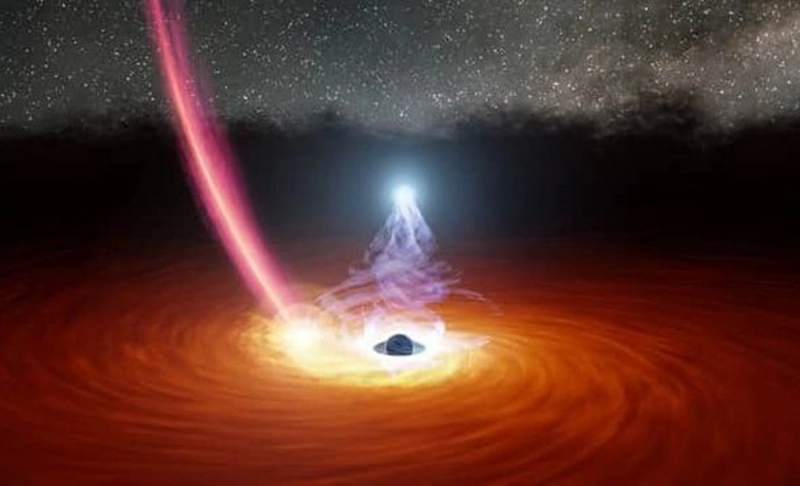By: Laura Vitelli
July 7 2022

These claims are based on misunderstandings of quantum physics and falsified evidence.
Context:
Recently, there has been an uptick in concerned posts surrounding the re-activation of the Large Hadron Collider (LHR) at CERN near Geneva, Switzerland on July 5, 2022, following a three-year shutdown period. These posts have made a range of slightly different but narratively-related unfounded claims that assert that the last time the LHR was activated, otherworldly or otherwise unexplainable phenomena occurred.
In the run-up to the LHR’s activation on July 5, several social media users across platforms such as TikTok and Facebook asserted that activating the LHR creates a timeline shift, evidenced by the phenomenon known as the Mandela effect. Others have claimed that the scientists at CERN intended to use the LHR to open some sort of portal to a higher dimension or parallel universe and shared pictures of what they claimed to be evidence of these portals in the sky above Geneva.
In fact:
The claims that the Large Hadron Collider is capable of opening any sort of portal are based on misunderstandings and exaggerations of the LHC’s purpose and its capabilities. The Large Hadron Collider at CERN was built to identify and study some of the universe’s smallest and least-understood particles. Roughly speaking, it works by "smashing together" incomprehensibly small particles to allow scientists to observe their behavior and see what they’re made of. In 2012, scientists at CERN successfully identified the Higgs Boson, an elementary particle whose existence had been theorized since the mid-20th century and is thought to have played an instrumental role in the origins of our universe.
When the Higgs Boson was discovered, several conspiracy theorists claimed that this created a black hole that swallowed the planet and threw everyone into a near-identical alternate dimension or timeline. There is no evidence to support this. Scientists at CERN have repeatedly stated that although the LHR is indeed a very powerful machine, it does not possess the power to create the phenomenon that conspiracy theorists were concerned about, known as Hawking decay. Furthermore, this concern was based on a misunderstanding of a preface written by the late Professor Stephen Hawking in a book titled Starmus: 50 Years of Man in Space by astrophysicist Garik Israelian.
This misunderstanding has arisen from the confusion of two similarly-named phenomena; namely the Higgs Potential and the Higgs Boson. In the aforementioned preface, Professor Stephen Hawking states that "The Higgs potential […] might become metastable at energies above 100 [billion] gigaelectronvolts (GeV). This could mean that the universe could undergo catastrophic vacuum decay, with a bubble of the true vacuum expanding at the speed of light. This could happen at any time and we wouldn't see it coming."
In an interview with the science magazine Popular Mechanics, a theoretical astrophysicist at Melbourne University named Katie Mack explained the difference between the Higgs Potential and the Higgs Boson thus: “The Higgs field permeates the entire universe, and the Higgs boson is an excitation of that field, just like an electron is an excitation of an electric field. In this analogy, the Higgs potential is like the voltage, determining the value of the field.”
One of the most common CERN-related conspiracy theories claims that the LHR-induced timeline shift is responsible for the Mandela effect. The term Mandela effect was coined by self-described "paranormal consultant" Fiona Broome in 2010 after she noticed that many people shared her (false) memory of famed South African civil rights leader Nelson Mandela dying in prison during the 1980s, when in fact he passed away in his home in 2013. However, the Mandela effect is not evidence of the existence of parallel universes or timelines.
Human memory is notoriously unreliable. Tim Hollins, Professor of Experimental Psychology at the University of Plymouth, U.K, has argued that the Mandela effect may be an example of several psychological phenomena, such as gist memory, which is when someone has a general idea of something but not a strong grasp of the details. The shared aspect of the Mandela effect may possibly be attributed to a phenomenon known as Asch conformity, so-named after the experiments by a psychologist named Solomon Asch at Swarthmore College, Pennsylvania in the 1950s. These experiments showed that people have a strong tendency to conform their views to fit in with a group.
The pictures that have been used by conspiracy theorists as evidence of portals in the sky above Geneva are real photos of a natural supercell weather phenomenon taken by nature photographer Christophe Suarez on June 24, 2016. The images, which he posted to his social media accounts, were taken and reposted without his permission on June 27, 2016, by a YouTube page called "Freedom Fighter Times” which claimed that the photos showed a “ball of energy” in the sky above CERN. However, as Suarez noted, these photos were not only not taken over the CERN campus, but on the night on which the photos were taken, Swiss meteorologists had predicted the weather patterns that he photographed.
The verdict:
The conspiracy theories surrounding the Large Hadron Collider’s intention and purpose are based on misunderstandings of complex quantum physics and falsified evidence in the form of photos reposted without the owners’ permission. The Large Hadron Collider is not capable of creating any kind of black hole or portal, or otherwise inducing a timeline switch to which the Mandela effect may be attributed. We have marked the post as false.